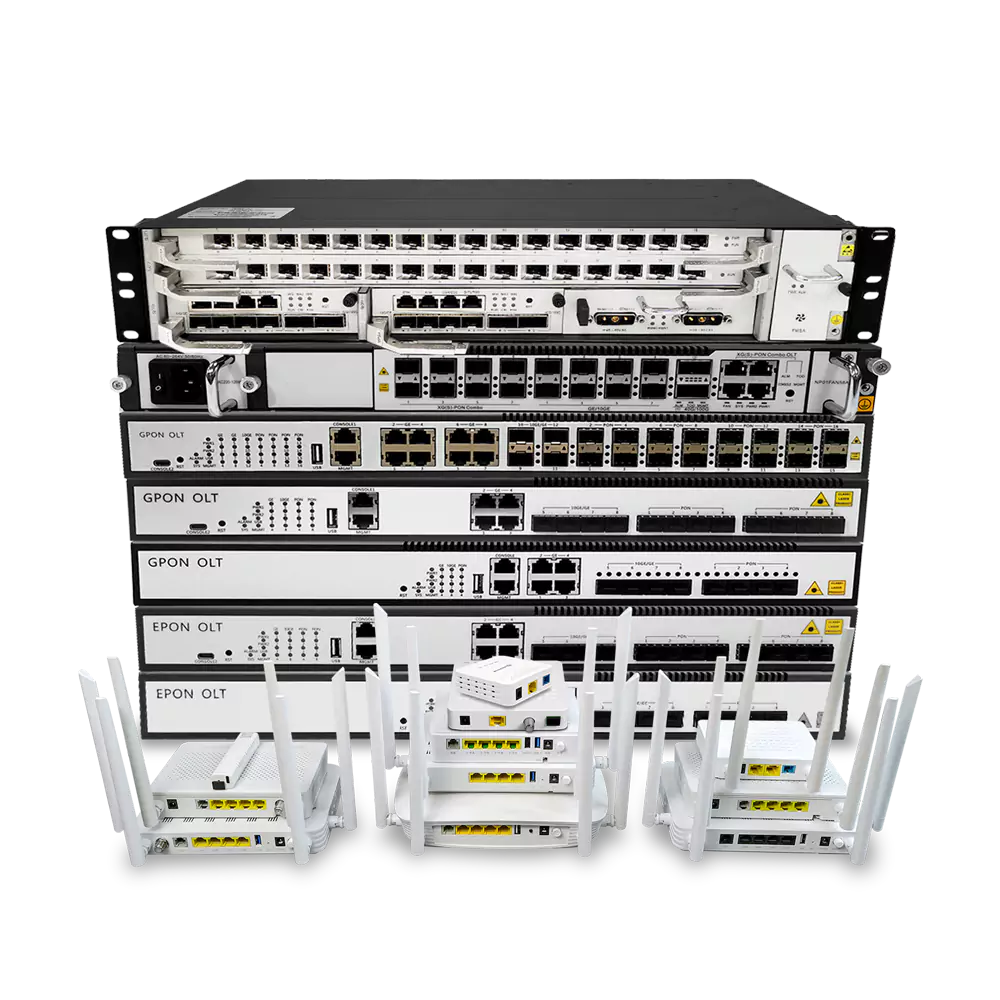The optical module (Optical Transceiver) is a crucial component in optical communication systems, responsible for converting electrical signals to optical signals and vice versa. The performance of the optical module directly affects the quality and stability of the optical communication network. Below are the key parameters of optical modules:
1. Data Rate
- Definition: The data transmission speed supported by the optical module, usually expressed in Gbps (Gigabits per second).
- Importance: This is a critical parameter to evaluate the performance of the optical module and affects the network’s bandwidth and throughput. Common data rates include 1 Gbps, 10 Gbps, 40 Gbps, 100 Gbps, etc.
2. Transmission Distance
- Definition: The maximum distance over which the optical module can transmit a signal reliably, given the fiber type and transmission conditions.
- Importance: Transmission distance depends on factors like output power, receiver sensitivity, and fiber attenuation. Different optical modules are designed for different transmission distances.
- Common Ranges: For example, SFP modules typically support distances from a few hundred meters to tens of kilometers, while high-end modules like QSFP+ can support distances of over 100 km.
3. Transmitter Power
- Definition: The power of the optical signal emitted by the light source (usually a laser diode) in the optical module, typically measured in dBm (decibels milliwatt).
- Importance: Transmitter power determines the strength of the optical signal and affects the distance the signal can travel through the fiber. Higher transmitter power is suitable for long-distance transmission.
- Standard Values: For example, Class B+ typically has a transmission power in the range of 1.5 dBm to 5 dBm.
4. Receiver Sensitivity
- Definition: The minimum optical signal strength that the receiver of the optical module can detect and decode accurately, usually expressed in dBm.
- Importance: Receiver sensitivity determines the ability of the optical module to detect weak signals. The higher the receiver sensitivity, the lower the optical signal strength the module can handle while still maintaining error-free reception.
- Standard Values: For instance, Class B+ typically has a receiver sensitivity of -27 dBm.
5. Fiber Type
- Definition: The type of optical fiber that the module is designed to operate with, typically either single-mode fiber (SMF) or multi-mode fiber (MMF).
- Importance: Different optical modules are designed to work with specific types of fiber. Single-mode fibers are used for long-distance transmission, while multi-mode fibers are used for short-distance transmission.
6. Form Factor
- Definition: The physical shape and interface of the optical module, typically standardized for compatibility.
- Common Types: SFP, SFP+, QSFP, QSFP+, QSFP28, etc.
- Importance: The form factor determines whether the optical module is compatible with network devices, and different form factors support different transmission rates and applications.
7. Wavelength
- Definition: The wavelength of the light emitted by the optical module, usually expressed in nm (nanometers).
- Importance: The wavelength affects the transmission characteristics of the signal. Single-mode modules typically operate at longer wavelengths (e.g., 1310 nm, 1550 nm), while multi-mode modules operate at shorter wavelengths (e.g., 850 nm).
- Common Wavelengths: 850 nm (multi-mode), 1310 nm (single-mode), 1550 nm (single-mode).
8. Power Consumption
- Definition: The amount of power the optical module consumes during operation, typically measured in W (watts).
- Importance: Power consumption is an important efficiency metric, especially in large data centers or high-density networks, as it impacts energy costs and heat generation.
9. Bit Error Rate (BER)
- Definition: The rate at which errors occur in the transmitted data over a given time period.
- Importance: A lower BER indicates better signal quality and more reliable data transmission. Typically, optical modules are designed to operate with a BER of less than 10^-12.
10. Transmission Mode
- Definition: The operational mode of the optical module, such as short-range (SR), long-range (LR), extended-range (ER), etc.
- Importance: The transmission mode determines the distance and type of fiber the module supports, influencing its use in different applications.
11. Temperature Range
- Definition: The range of ambient temperatures in which the optical module can operate reliably.
- Importance: In harsh environments, optical modules must support wider temperature ranges. Industrial-grade modules often support a broader range (e.g., -40°C to 85°C), while standard modules typically support 0°C to 70°C.
12. Split Ratio
- Definition: In Passive Optical Networks (PON), this refers to the ratio at which one optical signal is split and distributed to multiple users.
- Importance: The split ratio affects the performance of the optical module, including its transmitter power and receiver sensitivity, and is important in scenarios like GPON or EPON networks.
Conclusion
These parameters together determine the performance and suitability of an optical module for a specific application. When choosing an optical module, it’s important to consider the network’s requirements, such as data rate, transmission distance, signal quality, and power consumption, to ensure optimal performance and reliability.

